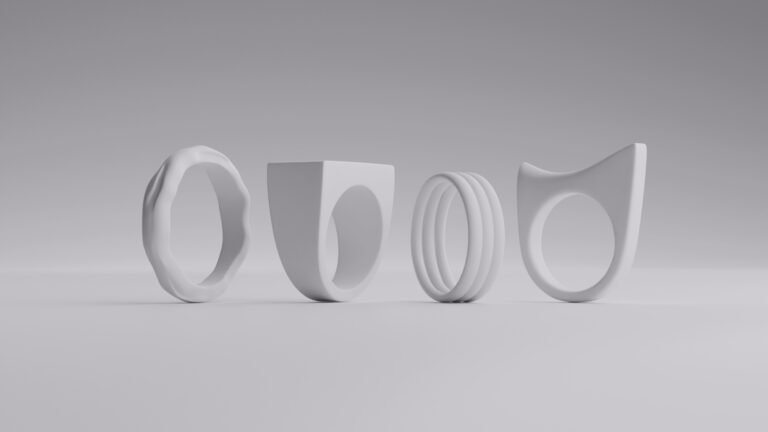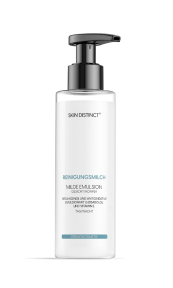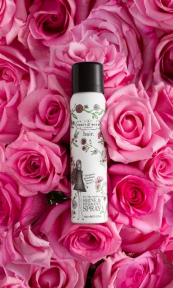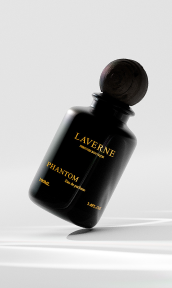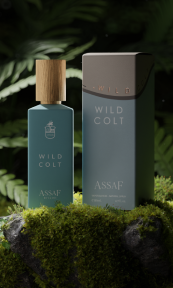As of 2025, the landscape of product video marketing continues to evolve at lightning speed. From interactive shoppable videos to AI-driven personalization, brands are leveraging cutting-edge technologies to captivate audiences and drive conversions like never before. This article explores the top product video marketing trends that are reshaping how businesses connect with consumers in the digital age.
Whether you’re a seasoned marketer or a small business owner looking to make your mark, understanding these trends is crucial for staying ahead in the competitive world of product video marketing.
The rise of interactive product videos

Product video marketing is evolving rapidly, with interactivity taking center stage. As brands seek to engage customers more deeply and create memorable experiences, interactive elements are becoming essential in product videos. This shift is transforming how consumers interact with products in the digital space, blurring the lines between entertainment and commerce.
Shoppable videos are gaining traction and changing the e-commerce experience
According to Vidico, shoppable videos are emerging as one of the top product video marketing trends of 2025, allowing viewers to click on products within the video to make purchases. This trend is supported by major social media platforms introducing native shopping features, making it easier for brands to implement shoppable video content.
This seamless integration of commerce into video content reduces friction in the buying process, potentially increasing conversion rates for e-commerce businesses. By allowing customers to purchase products directly from engaging video content, brands can capitalize on impulse buying behavior and create a more immersive shopping experience. This trend also provides valuable data on viewer engagement and purchasing patterns, enabling brands to refine their product video marketing strategies.
360-degree product videos are becoming more prevalent
Orbitvu reports that 360-degree product videos are on the rise, offering customers a more comprehensive view of products. This trend is particularly notable in industries such as fashion, automotive, and home decor, where detailed product examination is crucial to the purchasing decision.
These immersive videos provide a near in-store experience, allowing customers to examine products from all angles, which can boost confidence in online purchases. By giving customers the ability to rotate and zoom in on products, 360-degree videos address one of the main challenges of online shopping: the inability to physically interact with items before purchase. This enhanced visualization can lead to reduced return rates and increased customer satisfaction, as buyers have a clearer understanding of what they’re purchasing.
Augmented Reality (AR) is revolutionizing product video experiences
AR-enhanced product videos are also gaining traction in e-commerce, as Orbitvu points out. Allowing customers to virtually place products in their own environments works like a charm in industries such as furniture, home decor, and fashion. Vidico also notes that AR features in product videos are becoming more accessible to brands of all sizes, thanks to improvements in mobile technology and AR development tools. They explain that “the AR and VR market is projected to generate US$40.4 billion in revenue in 2025 and grow at an annual rate of 8.97%, reaching US$62.0 billion by 2029.”
AR integration in product videos takes interactivity to a new level, bridging the gap between online shopping and the in-store experience. By enabling customers to visualize products in their own space through their mobile devices, AR reduces purchase hesitation and increases confidence in buying decisions. This technology is especially valuable for products where size, scale, or fit are crucial factors. Moreover, the novelty of AR experiences can increase engagement and sharing, potentially expanding the reach of product videos through social media and word-of-mouth marketing.
Interactive elements in product videos are not just a trend but a transformation in how consumers engage with and purchase products online. As technology continues to advance, we can expect even more innovative forms of interactivity to emerge and top the product video marketing trends list.
AI-powered personalization in product videos

Artificial Intelligence is revolutionizing product video marketing, enabling unprecedented levels of personalization and targeting. This technological advancement is allowing brands to create more relevant, engaging, and effective video content that resonates with individual viewers on a deeper level.
AI is enabling real-time video personalization
According to Copy.ai, AI-driven technologies are allowing marketers to create personalized video content in real time based on viewer data. This includes dynamically changing elements such as product recommendations, pricing, and even narratives to match individual preferences and browsing history.
This level of personalization can significantly increase engagement and conversion rates by delivering highly relevant product video content to each viewer. By leveraging AI to analyze vast amounts of data and make split-second decisions, brands can create video experiences that feel tailor-made for each customer. This not only enhances the viewer’s experience but also increases the likelihood of conversion by presenting the most appealing products or features to each individual.
AI is optimizing video placement and distribution, ensuring maximum visibility.
As Evolv explains, AI algorithms are being used to determine the best platforms and times for distributing product videos. These algorithms analyze factors such as platform usage patterns, audience demographics, and even current events to recommend optimal distribution strategies.
This optimization ensures that product videos reach the right audience at the right time, maximizing their impact and ROI. By using AI to navigate the complex landscape of digital platforms and audience behaviors, brands can ensure their videos are seen by those most likely to engage and convert. This targeted approach not only improves the effectiveness of individual campaigns but also helps brands allocate their marketing resources more efficiently across different platforms and audience segments.
AI is revolutionizing video editing and production processes
ContentStudio puts it simply – the main benefit of AI in product video marketing is quicker content creation. AI algorithms can analyze video footage, identify the most engaging moments, and automatically create highlight reels or trailers. This not only saves time and resources but also ensures that the final product is optimized for maximum impact. Plus, if you give AI the right prompt, it can generate a video from scratch in just a few minutes.
By leveraging AI in the video editing process, marketers can streamline their production workflows and create more compelling product videos. The ability to automatically identify and compile the most engaging moments allows for the creation of attention-grabbing teasers and trailers, which can be crucial for capturing viewer interest in the crowded digital space.
Additionally, this AI-driven approach to editing can help maintain consistency in brand messaging and style across multiple videos, ensuring a cohesive product marketing strategy.
AI is not just enhancing product video marketing; it’s fundamentally changing how brands create, distribute, and optimize their video content. As AI technologies continue to evolve, we can expect even more sophisticated personalization, optimization, and production strategies to emerge, further revolutionizing the product video marketing landscape.
Short-form product videos dominate social media

As attention spans shrink and social media platforms evolve, short-form product videos are becoming a vital part of marketing strategies. These bite-sized pieces of content are proving to be powerful tools for brands looking to make an impact in the crowded digital space. With over five billion social media users today, it makes perfect sense that product video marketing trends should involve social media short-form.
TikTok-style product videos are gaining popularity across platforms
WordStream reports that TikTok-inspired short-form videos are being adopted by brands across various social media platforms for product marketing. This trend has led to the development of similar features on other platforms, such as Instagram Reels and YouTube Shorts, specifically designed to compete with TikTok’s format.
Analysis: These bite-sized videos cater to the fast-paced nature of social media consumption, allowing brands to showcase products and capture viewer attention quickly. The viral nature of these platforms can lead to exponential reach for successful videos, potentially exposing products to millions of viewers in a short time.
And there’s more to it – the informal and often humorous style associated with these platforms allows brands to showcase their products in more relatable and engaging ways, potentially connecting with younger audiences who may be skeptical of traditional advertising.
Instagram Reels are becoming a key product video marketing channel
Firework makes clear that Instagram is one of the backbones of product video marketing in 2025. The platform’s algorithm heavily favors Reels content, giving brands increased visibility when they utilize this format.
As Instagram continues to prioritize video content, Reels offer brands a powerful tool to reach and engage potential customers with quick, visually appealing product showcases. The integration of Reels with Instagram’s shopping features creates a seamless path from discovery to purchase, making it an ideal platform for product marketing. Additionally, the ability to use trending music and effects in Reels allows brands to tap into current cultural moments, increasing the relevance and shareability of their product videos.
Short product teasers are driving traffic to longer-form content
Using short video teasers can entice viewers to watch longer product videos or visit websites. These teasers, often just a few seconds long, are designed to pique curiosity and encourage further engagement. Vidico reports a 34% increase in conversion rates when using long-form videos in marketing campaigns.
This strategy leverages the power of short-form content to capture interest while still providing avenues for deeper engagement with the product. By using intriguing snippets to lead viewers to more comprehensive content, brands can cater to both casual browsers and seriously interested customers. This approach also allows for more complex storytelling, using the short teaser to hook viewers and the longer content to provide detailed information, testimonials, or in-depth demonstrations.
Short-form videos are not just a passing product video marketing trend but a fundamental shift in how brands communicate with consumers on social media platforms. As these formats continue to evolve, we can expect to see even more creative uses of short-form video in product marketing, potentially leading to new hybrid formats that combine the immediacy of short content with the depth of longer presentations.
Sustainability and authenticity in product video marketing

In 2025, consumers are increasingly valuing brands that demonstrate commitment to sustainability and authenticity in their marketing efforts. This shift is thus reflected in the way product videos are being created and received by audiences.
Eco-friendly product videos are resonating with consumers, driving brand preference
Videos showcasing sustainable products and eco-friendly practices are gaining traction. Brands increasingly highlight their use of recycled materials, sustainable manufacturing processes, and efforts to reduce carbon footprints in their product videos.
This product video marketing trend reflects growing consumer awareness and concern about environmental issues, making sustainability a key differentiator in product marketing. By showcasing eco-friendly aspects of their products and processes, brands can appeal to environmentally conscious consumers and potentially command premium pricing.
Moreover, these videos often serve an educational purpose, informing viewers about environmental issues and encouraging more sustainable consumption habits, which can foster a deeper connection between the brand and its audience. Studies show that nearly three-quarters of customers are more inclined to interact with companies that highlight their eco-friendly initiatives.
Moreover, well over half of consumers express a willingness to spend extra on goods produced by businesses that demonstrate environmental responsibility.
Product videos featuring real company members are building trust and fostering genuine connections
According to Rayna van Beuzekom, video editor and producer at Commsor, there’s a growing trend of featuring more real people on camera, including sellers, marketers, and executives. Stephanie Roulic, Founder & CEO at Startup Boston, emphasizes that this trend is particularly important for startups and small businesses, as it helps to sell early adopters on the company’s vision and build trust with potential customers.
This shift towards showcasing real company members in product videos, rather than actors or influencers, humanizes brands and creates a more authentic connection with the audience. By featuring employees, founders, and partners, companies can demonstrate the personality and values behind their products.
This smart approach not only highlights the product’s value but also tells the story of the team behind it, fostering a sense of transparency and reliability. As consumers increasingly seek genuine interactions with brands, this strategy can significantly enhance brand affinity and customer loyalty in the long term.
User-generated content is being integrated into product videos
Medium describes user-generated content (UGC) as “a potent force for building brand credibility and trust” and one of the top product video marketing trends this year. UGC customer testimonials, unboxing videos, and real-world product demonstrations created by actual users.
This approach adds credibility to product claims and fosters a sense of community around the brand, leveraging social proof to influence purchasing decisions. By showcasing real customers using and enjoying their products, brands can provide authentic endorsements that resonate more strongly with potential buyers than traditional marketing messages.
Additionally, featuring user-generated content can encourage more customers to create and share their own videos, expanding the brand’s reach through organic, word-of-mouth marketing.
Conclusion
Authenticity and sustainability are becoming central themes in product video marketing, reflecting broader shifts in consumer values and expectations. As these trends continue to evolve, we can expect to see more innovative ways of incorporating these elements into product videos, potentially leading to new formats that blend brand-created content with user-generated material to create compelling, trustworthy marketing narratives.







